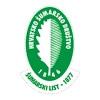
DIGITALNA ARHIVA ŠUMARSKOG LISTA
prilagođeno pretraživanje po punom tekstu
| ŠUMARSKI LIST 1-2/1966 str. 36 <-- 36 --> PDF |
expensive and requires large areas, and consequently, it is applied in Sweden only in one or two seed orchards of each tree species. However, it enables, experimental results for a complete diallel crossing pattern to be compared subsequently with the corresponding results from different partial diallel mating designs (see Hinkelmann, 1960, Kempthorne and C u r n o w, 1961, and Ster n 1964 among other authors). When choosing crossing systems and experimental field designs for the partitioning of the genetic variance in each progeny test, the plus tree composition of the orchards must be considered, i.e. whether the clones represent different populations, provenances or even different species (see Stern , 1964). Several partial diallel mating desingns, where n clones are crossed with m testers, have been applied in Sweden. On the other hand, hitherto we have not used mating designs such as top cross, where all the clones included in a seed orchard are crossed with a common tester, and polycross, where all clones are crossed with a mixture of pollens from a number of clones. Until now, a design with four male parent trees or common testers has been employed in a set of seed orchards. In this, all the remaining n-4 clones are crossed with the four selected testers. The test trees are crossed in turn with four either clones. In other cases, either K e m p- thorn e and Curnow´ s (1961) mating design, or other partial diallel cross systems have been tried out; these enable, inter alia, analyses of the general and specific combining efects of the plus trees to be made, both within and between populations and provenances, when combined with useful and higly efficient experimental field designs. The degree of combining ability of the plus trees is, naturally, of extreme importance for the composition of polyclonal seed orchards (which must be based on cross-pollination of the clones with high general combining ability), and for the composition of biclonal seed orchards (which, in turn, must be based on crosses between two very richly flowering clones with high specific combining ability). In. addition, these two clones must flower at the same time, and preferably show self-incompatibility. Scaling of the plus and the check trees is done in accordance with specially prepared instructions. In addition to the prescribed scaling and collection of increment cores, reports are made on stand history, stand density, ground vegetation, mixture of tree species, growing area of the plus trees in m~. topography, and soil type. Moreover, in phenotype control the following data are recorded: the number of stumps near to the plus and check frees, the diameter of the twickest stumps in relation to mean diameter, at stump height, of the thickest standing trees, and the occurence and size of open spaces or gaps in the stand near to the plus and check trees. Fig. 7 and 8 show the registration of plus trees. Fig. 7 show a control card used for all selected trees; and Fig. 8 a control card for plus trees included in many seed orchards and clone tests. CHOICE OF STANDS FOR PLUS TREES SELECTION Many theoretical and practical problems arise in connection with plus tree selection. One important question is, which types of stand should we choose for our plus tree selection? and: Is the selection effect or the selection gain affected to a significant extent, if these stands are sparsely stocked, normally stocked, well stocked, or overstocked? The answer to these questions must |